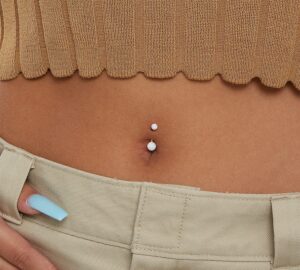Body piercing is the practice of puncturing or cutting a part of the human body, creating an opening in which body jewelry may be worn. Common places to pierce are the ears, nose, and lips. More unusual piercings include those done to the eyebrows, navel, and nipples. So, if you want to wear a navel ring, nipple ring, belly ring, or earring, you need the piercing to be done first.
Body piercing using needles
Needles are commonly used for body piercings, although other sharp objects may also be used. The needle is inserted into the desired area and then quickly removed, leaving a small opening. A piece of jewelry is then inserted into this opening.
Body piercings have been around for centuries and were once seen as a symbol of status or belonging to a certain group. Today, body piercings are more commonly seen as a form of self-expression.
Body piercing using guns
A piercing gun is a device that is used to puncture holes through the skin. It is typically used to create piercings in the ears, but can also be used for other types of piercings. The gun uses a spring-loaded mechanism to push a sharp object through the skin.
Piercing guns are not as safe as other methods of creating piercings, such as using a needle. This is because the gun can cause tissue damage and can also lead to infections. There is also a risk of the earlobe being torn if the earring is not put in correctly.
In this blog post, we have shared the major differences between piercing guns and piercing needles.
Let’s begin!
#1 Tissue risk
There could be a tissue risk with the piercing gun while piercing needles are safe. This is because when you use a piercing gun, the tissue is forced apart and can cause bruising, whereas, with a needle, the tissue is not forced apart. Also, if the gun is not sterilized properly, there could be a risk of infection.
#2 Infection
With piercing guns, there are always chances of infections. So, you must prefer needles for piercing. This is because when you use a needle, it is inserted into the flesh with great care and precision. There is no chance of infection when the needle is inserted into the flesh in this way.
Piercing guns are often not properly sterilized between uses, which means that they can harbor bacteria. When the gun is used, that bacteria is then pushed into the person’s skin. This can cause an infection at the site of the piercing.
#3 Swelling
Swelling after the gun piercing is very common; however, in the case of needle piercing, there is a low chance of swelling. This is because the needle punctures the skin cleanly and with less force than a gun. Therefore, if you are considering getting a body piercing, you may want to opt for needle piercing over gun piercing to avoid any discomfort or swelling.
Piercing guns are often the cause of swelling because they force the jewelry through the skin. This can damage the tissue and cause inflammation. In some cases, the swelling can be so severe that it requires medical attention. If you experience any swelling after getting a piercing, it is important to seek out medical help right away.
#4 Irritation
Most people who get their piercings done with a gun complain about irritation afterward. This is because the gun forces the jewelry through the skin, causing trauma and damage to the surrounding tissue. Therefore, if you’re thinking about getting a piercing, it’s important to do your research and make sure you’re using a reputable piercer who uses sterile needles.
#5 Inaccuracy
There is a misconception that guns are more accurate than needles when piercing the skin. This is not the case. Needles are actually much more accurate than guns. The reason for this is that needles are much thinner than guns. This means that they can penetrate the skin more easily and with less force. Additionally, needles are less likely to cause tissue damage than guns.




